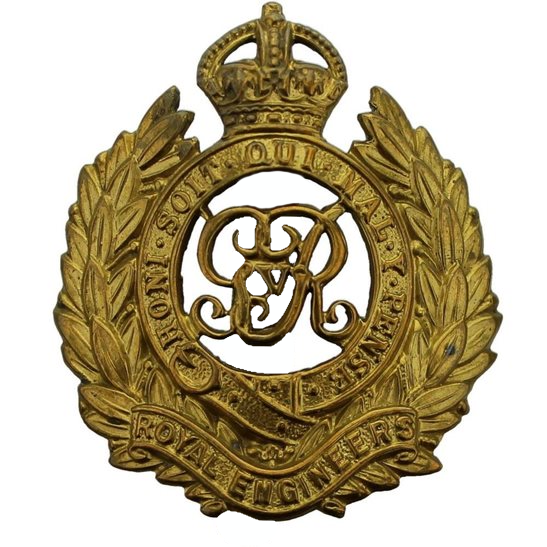Personal Details
Born: In the last quarter of 1878 in Droxford, Hampshire.
Family: He was the eldest of four children born to George and Charlotte Reeves. George married Winifred Ainsworth in 1906 in Wem, Shropshire registration area. The couple went on to have three children together, George Ainsworth, Kathleen N and Vera W.
Residence: In 1881 the family were living at Malthouse Cottages, Bishops Waltham, Droxford, Hampshire. Ten years later they were still in the same village. By 1901 George had left home and was boarding at 32 Green End, Whitchurch, Shropshire. At the time of the 1911 census he was residing with his wife, child and servant at Oakdene, Salisbury Road, Whitchurch. By 1939 the family had moved to 87 Alkington Road, Whitchurch and were still at the same address when George died the following year.
Employment: By 1901 George was working as a reporter in Whitchurch and at the time of his attestation in 1917 he was described as a newspaper editor. The 1939 Register records his occupation as journalist, registrar of marriages and clerk to the Joint Cemetery Board. At the time of his death a Liverpool newspaper referred to him as editor of the Whitchurch Herald.
Died: 28 February 1940, aged 61, and buried in Whitchurch Cemetery on 2 March the same year.
Military Details
Regiment: Royal Engineers (road construction corps)
Rank: Corporal
Service Number: 240795 (previously WR/24358)
Date of Enlistment: 30 November 1915 but not mobilised until 5 March 1917
Date of Discharge: Not known
Reason for Discharge: Not known
Other Information: Promoted to corporal Nov 1918. The prefix “WR” is normally applied to members of the Royal Engineers concerned with Waterways & Railways.
George was awarded the Campaign Medals (British War Medal, and Victory Medal).

The British War Medal (also known as 'Squeak') was a silver or bronze medal awarded to officers and men of the British and Imperial Forces who either entered a theatre of war or entered service overseas between 5th August 1914 and 11th November 1918 inclusive. This was later extended to services in Russia, Siberia and some other areas in 1919 and 1920. Approximately 6.5 million British War Medals were issued. Approximately 6.4 million of these were the silver versions of this medal. Around 110,000 of a bronze version were issued mainly to Chinese, Maltese and Indian Labour Corps. The front (obv or obverse) of the medal depicts the head of George V. The recipient's service number, rank, name and unit was impressed on the rim.
The Allied Victory Medal (also known as 'Wilfred') was issued by each of the allies. It was decided that each of the allies should each issue their own bronze victory medal with a similar design, similar equivalent wording and identical ribbon. The British medal was designed by W. McMillan. The front depicts a winged classical figure representing victory. Approximately 5.7 million victory medals were issued. Interestingly, eligibility for this medal was more restrictive and not everyone who received the British War Medal ('Squeak') also received the Victory Medal ('Wilfred'). However, in general, all recipients of 'Wilfred' also received 'Squeak' and all recipients of The 1914 Star or The 1914/1915 Star (also known as 'Pip') also received both 'Squeak' and 'Wilfred'. The recipient's service number, rank, name and unit was impressed on the rim.

